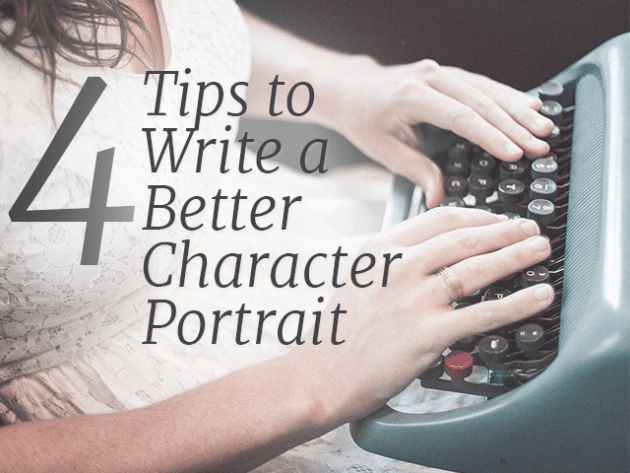The article 4 Tips to Write a Better Character Portrait appeared first on The Write Practice.
To prepare for this week’s post, I took a look at my notes from the Cheryl Strayed retreat I attended. I shared some of what I learned here and here and here. Thankfully, I was able to find a few more gems—and writing prompts.
Today’s topic? Character portraits.
1. Character Portraits Reveal Relationship
A portrait is a description of a person or a group of people.
From Cheryl Strayed, however, I learned portraits also reveal the relationship between a person and the writer (in memoir) or another character (fiction).
For example, a person might describe his father using terms like “looming,” “powerful,” and “spoke with a deep voice.” In addition to providing a physical description, these words evoke some of that fear or intimidation a child may have for his parent.
Another person (his wife, for example) may use completely different words to describe the same man.
So ask yourself, does your portrait reflect the person’s relationship to the speaker?
2. Character Portraits Are About More than the Physical
Cheryl read us a paragraph from a writer about his mother—but he didn’t use a single physical description.
Instead, he wrote, “She was the type of woman who was charming and beloved by strangers, but all of us close to her couldn’t help but walk on egg shells.”
I made this example up because I couldn’t remember the exact paragraph. However, I do remember the author wrote about his mother’s actions, how she made people feel, and what she said, while completely avoiding describing her physical appearance.
You don’t have to eliminate physical description. Rather, I encourage you to consider how you might create an image of a character if you couldn’t describe his or her appearance.
3. Character Portraits Can Be Made for Groups of People
When Cheryl was hiking the Pacific Crest Trail in her memoir Wild, she kept running into a certain type of hiker. This group of hikers spoke a certain way, wore certain gear, and were all hiking for similar reasons. To portray this group, Cheryl decided to combine all of them into one, single character.
In cases where you want to depict a certain type of person, she said, you can choose to either combine those people into a single character, like she did (in memoir, I might add), or you can literally write a portrait of the group.
For example, “The women of Logan Circle wear Lululemon yoga pants, racer-back tank tops, and yoga mats strapped across their backs.” That’s how I would describe certain people in Logan Circle, D.C. It’s not a portrait of one woman, but a type of woman that I always see there.
I understand the fear of stereotyping by describing groups this way. My suggestion is to try to be accurate and fair, but also to not be afraid to lean into your character’s subjectivity.
The real question is how the character would see these people. Would he or she really have a nuanced perspective?
4. When Writing Character Portraits, Follow the HEAT
I wrote down this quote from Cheryl:
When someone you know well does something they always do, that’s a point of heat and interest, and when someone does something they never do, it’s also a place of heat and interest.
In other words, follow the heat.
I think this advice is particularly helpful in memoir. Is there something someone in your life always does? Is it in your description of him or her? If not, it should be!
What about a time when someone did something they never do? Why did they do it? Let us know in the comments!
PRACTICE
I have a couple of related writing prompts for you today:
- Write a portrait of someone without describing him or her physically.
- Write a portrait of a group or category of people (or type of person).
- Write a portrait of yourself at your best or your worst.
Choose one of the writing prompts and write for fifteen minutes. When your time is up, share your writing in the practice box below. And if you share, please be sure to give feedback to your fellow writers.
Happy writing!
Enter your practice here:
The article 4 Tips to Write a Better Character Portrait appeared first on The Write Practice. The Write Practice – The Online Writing Workbook
Go to Source
Author: Monica M. Clark
